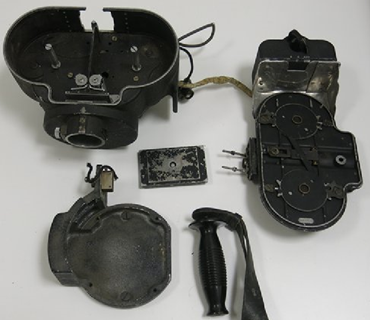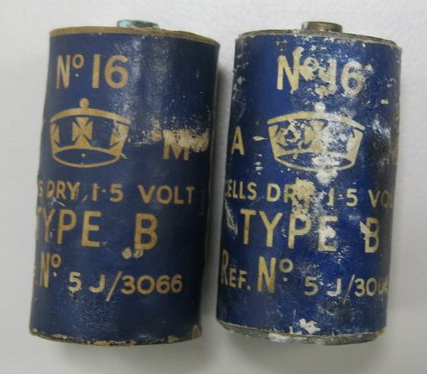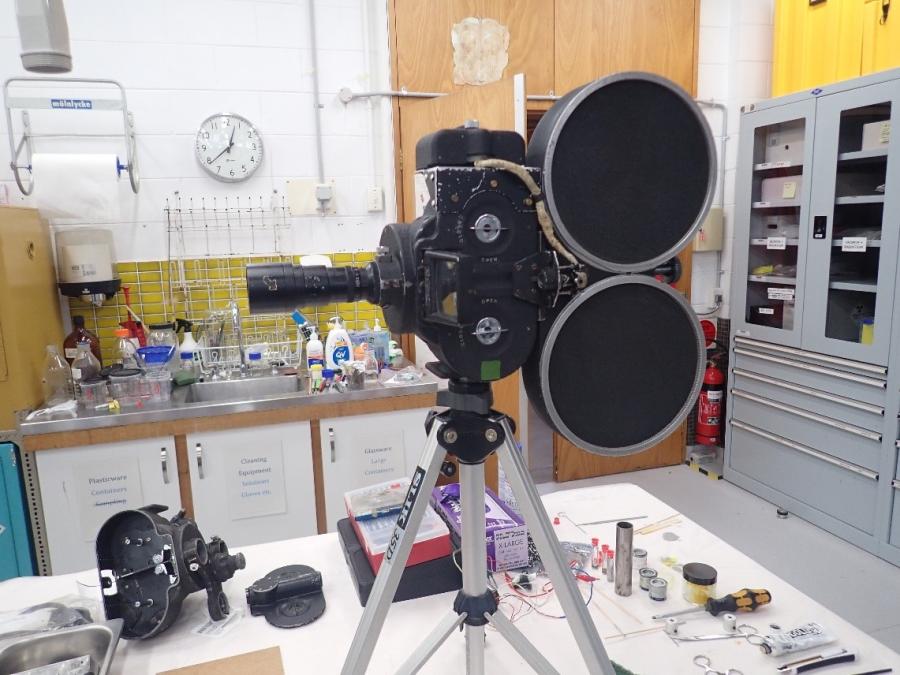The restoration of the Buckland Camera
While considering objects for inclusion in Action! War and Film, one item I definitely had to have was an electrified Bell and Howell 35mm Eyemo cine camera. The camera had been used by RAAF Flight Sergeant Robert Buckland to film the air war over Europe from a Lancaster during 1944 and 1945, before being donated to the Australian War Memorial.
The camera hadn’t been touched since at least the 1960s, and when I anxiously opened the box it came in, I couldn’t believe my eyes. It was a wreck. It looked like it had been through a war (it had, but not the one you’re thinking of). The camera was disassembled, and vital parts were missing or broken.

After some investigation, I realised that the camera had been altered to change the operating mechanism from clockwork to battery power. This unique camera, possibly the only survivor of its type from the Second World War, had to be saved.
I found was the original 1.5 volt batteries, which I originally I thought powered the whole camera, issued by the Air Ministry in England about 1944.

When it became apparent that important parts of the camera would have to be supplied, we put the word out to the Australian Cinematographers Society and located a collector who was happy to donate an Eyemo camera of the same vintage and a replacement magazine. From this we were able to extract missing parts: the magazine attachment plate, the screws that attached them, and the lens. We were halfway there.
The project was then taken up by conservator Andrew Schroeder, who cleaned the parts, remade some (based on period photographs), and repainted the replacement magazine. “The parts that weren’t disassembled were incorrectly assembled, and the bracket was poorly replicated,” he noted. “I also had to disassemble and correctly reassemble the camera drive mechanism, and stabilise the badly corroded battery housing.” His analysis of the Eyemo led me to reinterpret the way it was used.
Realising that the batteries were only used to power the reflector viewfinder, he cobbled together a basic externally-powered light bulb. This led to the discovery that the viewfinder was still working and generated an illuminated yellow crosshair. Andrew revealed that the Eyemo’s film drive was powered by the Lancaster’s electrical system and that the camera was bolted to a mount attached to the aircraft, rather than being hand held.
He remade the hand-made aluminium battery box bracket, and painted and aged it to match the 1945 photographs, and replaced the wrapping of the wiring that leads to the viewfinder bulb.
The camera’s transformation from a pile of parts into this glorious rare survivor and star of the exhibition is a credit to the conservator’s art. I’m gratified that we were able to rescue this piece of history which was in danger of being lost forever.
